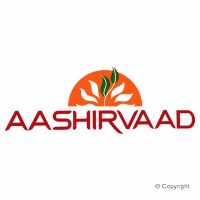Introduction:
Welcome to Chemco Group, where precision meets innovation! As a leading manufacturer of PET preforms, bottles, and jars, we recognize the crucial role of staying at the forefront of packaging solutions. In this blog, we delve into the captivating realm of smart packaging, exploring its diverse forms, industry-specific applications, and the transformative impact it brings to the rigid packaging landscape.
Beyond Aesthetics: Unveiling the Smart Packaging Revolution
Packaging plays a crucial role beyond just aesthetics. It protects products, enhances the customer experience, and serves as a vital branding tool. With evolving technology, packaging gains efficiency and functionality. The industry is rapidly growing, projected to reach £48.72 billion by 2026, driven by innovation and evolving consumer expectations.
Imagine packaging with superpowers—that’s the essence of smart packaging. By integrating cutting-edge technologies like sensors, chips, and QR codes, it interacts with its environment, gathering valuable data and elevating the experience to new heights of intelligence, efficiency, and engagement.
Across various sectors, the packaging market offers immense benefits. This guide explores everything you need to know about smart packaging, including real-world examples and insightful tips on leveraging this innovative technology for your business.
Types of smart packaging:
Active Packaging:
This type goes beyond traditional roles, actively interacting with the product. It incorporates functionalities like self-regulating temperature control, moisture absorption, or substance release to extend shelf life and reduce waste, playing a proactive role in maintaining product quality and freshness throughout its lifecycle.
Heinz has created a self-heating ketchup bottle integrated with a small, exothermic pouch that activates upon squeezing, providing warm ketchup on demand. This innovation caters to consumers who enjoy their ketchup warm with fries or hot dogs.
Intelligent Packaging:
This type integrates technologies like sensors, indicators, or RFID tags to provide real-time information about the packaged product’s condition. It actively monitors and communicates critical data, enhancing consumer awareness, ensuring informed decision-making, and promoting safety and quality assurance.
Evert Fresh uses smart labels with temperature sensors on its meat packaging. These labels change color based on temperature, alerting consumers to potential spoilage and ensuring safer food consumption.
Connected Packaging:
This type allows interaction between the consumer and the product through QR codes, NFC tags, or RFID chips. By scanning or tapping the packaging, consumers access additional information, and exclusive content, or engage in interactive experiences, fostering a more immersive and engaging journey
Coca-Cola’s bottles with connected caps reveal exclusive content, personalized offers, and allow participation in AR games by scanning the cap with a smartphone.
Industry-Specific Examples:
Pharma:
In the pharmaceutical realm, smart packaging includes blister packs with RFID tags for individual pill tracking, ensuring complete medication adherence. Smart labels on temperature-sensitive medication vials with color-changing indicators increase patient safety and reduce errors.
Example: Dr. Reddy’s Laboratories implements smart packaging for prescription medications, enhancing patient safety, adherence, and overall healthcare outcomes.
FMCG:
Fast-moving consumer goods (FMCG) embrace smart packaging through NFC chips embedded in rigid containers, offering personalized brewing instructions. In rigid packaging for fresh produce, smart labels track and display real-time freshness indicators, reducing food waste and promoting informed purchasing decisions.
Example: Patanjali’s Ayurvedic products utilize QR codes for detailed information, while Amul ensures transparency and quality assurance through smart labels on its dairy products. HUL’s Dove shampoo bottles now come with NFC tags that allow customers to access detailed product information, usage guidelines, and exclusive promotions by tapping their smartphones on the bottle.
Food:
In the food industry, connected stickers on Ashirwad Atta Packaging monitor freshness, providing consumers with optimal storage and consumption recommendations. Interactive labels on rigid containers leverage augmented reality (AR) technology for virtual farm tours and brand sustainability initiatives.
Example: Ashirwad Atta’s connected QR codes provide consumers with essential information, enhancing their knowledge and choices, ITC’s Sunfeast Yippee noodles feature QR codes providing consumers with fun recipes, cooking tips, and interactive games, enhancing the overall consumer experience.
Cosmetics:
The cosmetics sector integrates smart packaging with personalized dispensers embedded with AI. These dispensers analyze skin conditions and recommend compatible products and usage amounts, enhancing the customer experience.
Example: Dior’s AI-powered skincare dispenser, the “DiorSkin Analyst,” provides personalized consultations and product recommendations. Nykaa, a leading e-commerce platform, incorporates smart packaging features into its private-label products, enhancing the online shopping experience and providing valuable insights to customers.
Embracing the Future:
Smart packaging is not just a trend; it’s a revolution transforming industries and consumer experiences. Explore the possibilities, connect with industry experts, and stay informed about the evolving landscape. The future of packaging is bright, and we look forward to witnessing the positive changes it brings to businesses and consumers alike. Join Chemco Group in embracing the smart packaging revolution today!







